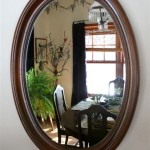How Do I Mirror My iPhone to Computer Without an Apple TV Remote?
Mirroring an iPhone screen to a computer offers numerous advantages, from presenting slideshows and demonstrations to enjoying mobile games on a larger display. While Apple TV facilitates effortless mirroring, users can achieve the same result without an Apple TV remote using several alternative methods. This article will explore these methods, outlining the necessary software and procedures.
Using AirPlay with Third-Party Receivers: The AirPlay protocol, central to Apple's screen mirroring functionality, is not limited to Apple TV. Several third-party applications can turn a computer into an AirPlay receiver. These applications create a virtual Apple TV on the computer, allowing the iPhone to connect and mirror its display wirelessly. Some popular options include AirServer, Reflector, and LonelyScreen. These software solutions typically offer free trials and affordable licenses.
Connecting via USB and QuickTime Player (macOS): For macOS users, QuickTime Player provides a built-in screen mirroring solution. This method requires a USB cable to connect the iPhone to the Mac. After connecting the devices, open QuickTime Player. Select "New Movie Recording" from the File menu. A recording window will appear. Click the dropdown arrow next to the record button and select the connected iPhone as the camera and microphone input. The iPhone's screen will then be mirrored in the QuickTime Player window. This method offers a wired connection, often resulting in lower latency than wireless solutions, making it ideal for tasks requiring precise timing, such as mobile game streaming.
Utilizing Third-Party Screen Mirroring Software for Windows: Windows users can leverage several dedicated screen mirroring applications. These applications offer similar functionality to the AirPlay receivers available for macOS, creating a virtual display that the iPhone can connect to wirelessly. Popular choices include ApowerMirror, 5KPlayer, and iMyFone MirrorTo. These software options often provide features beyond basic screen mirroring, such as recording the mirrored screen, taking screenshots, and transferring files between the iPhone and the computer.
Screen Mirroring for Presentations: When mirroring an iPhone for presentations, certain preparations are crucial. Ensure both the iPhone and the computer are connected to the same Wi-Fi network for wireless mirroring methods. Adjust the iPhone's display brightness and volume to optimal levels for viewing. If using a wired connection, ensure the cable is securely connected and supports data transfer. Testing the setup before the actual presentation is essential to prevent unforeseen technical issues.
Troubleshooting Connection Issues: If the iPhone fails to connect to the computer, several troubleshooting steps can be taken. First, confirm both devices are on the same Wi-Fi network and that AirPlay or the mirroring software is active. Restarting both the iPhone and the computer can often resolve connectivity problems. Disabling and re-enabling Wi-Fi on both devices can also help. If using a wired connection, try a different USB cable and port. Checking for software updates on both the iPhone and the computer and updating the mirroring software itself can also be beneficial.
Optimizing Performance: For optimal screen mirroring performance, a strong and stable Wi-Fi network is crucial. Close unnecessary applications running on both the iPhone and the computer to free up system resources. Minimizing interference from other devices on the Wi-Fi network can also improve performance. For wired connections, using a high-quality USB cable can ensure a stable connection. Adjusting the mirroring software's settings, such as resolution and frame rate, can balance quality and performance based on individual needs.
Choosing the Right Mirroring Method: The optimal mirroring method depends on specific requirements. For casual screen sharing or presentations, wireless methods using AirPlay receivers or third-party software offer convenience. When low latency is critical, such as for gaming, a wired connection via QuickTime Player (for macOS) is generally preferred. Consider the operating system of the computer, the desired features, and the specific application of the mirroring functionality when selecting a method.
Security Considerations when Screen Mirroring: When mirroring an iPhone screen, remember that sensitive information displayed on the phone will also be visible on the mirrored display. Exercise caution when mirroring in public spaces or on unsecured networks. Avoid mirroring banking apps, email accounts, or other applications containing sensitive data. Ensure the mirroring software used is reputable and from a trusted source to minimize security risks.
The Future of iPhone Screen Mirroring: As technology continues to evolve, so will the methods for screen mirroring. Advances in wireless protocols and software development are expected to yield even more seamless and feature-rich mirroring experiences in the future. Users can anticipate improvements in connection stability, latency reduction, and enhanced security features.

How To Mirror Iphone Tv Without Apple

How To Mirror Iphone Tv Without Apple

3 Ways To Mirror Iphone Tv Without Apple Istreamer

Top 3 Awesome Ways To Mirror Mac Tv Without Apple

Free Iphone Mirroring App Best Solutions 2024 Edition

How To Mirror Iphone Windows Pc Laptop Mac Full Guide

How To Mirror Iphone Tv Without Apple 3 Methods 2024

Ultimate Guide How To Screen Mirror Iphone Ipad Easily

Top 3 Ways On How To Connect And Mirror Iphone Panasonic Tv

Use Airplay To Stream Or Mirror The Screen Of Your Iphone Apple Support








